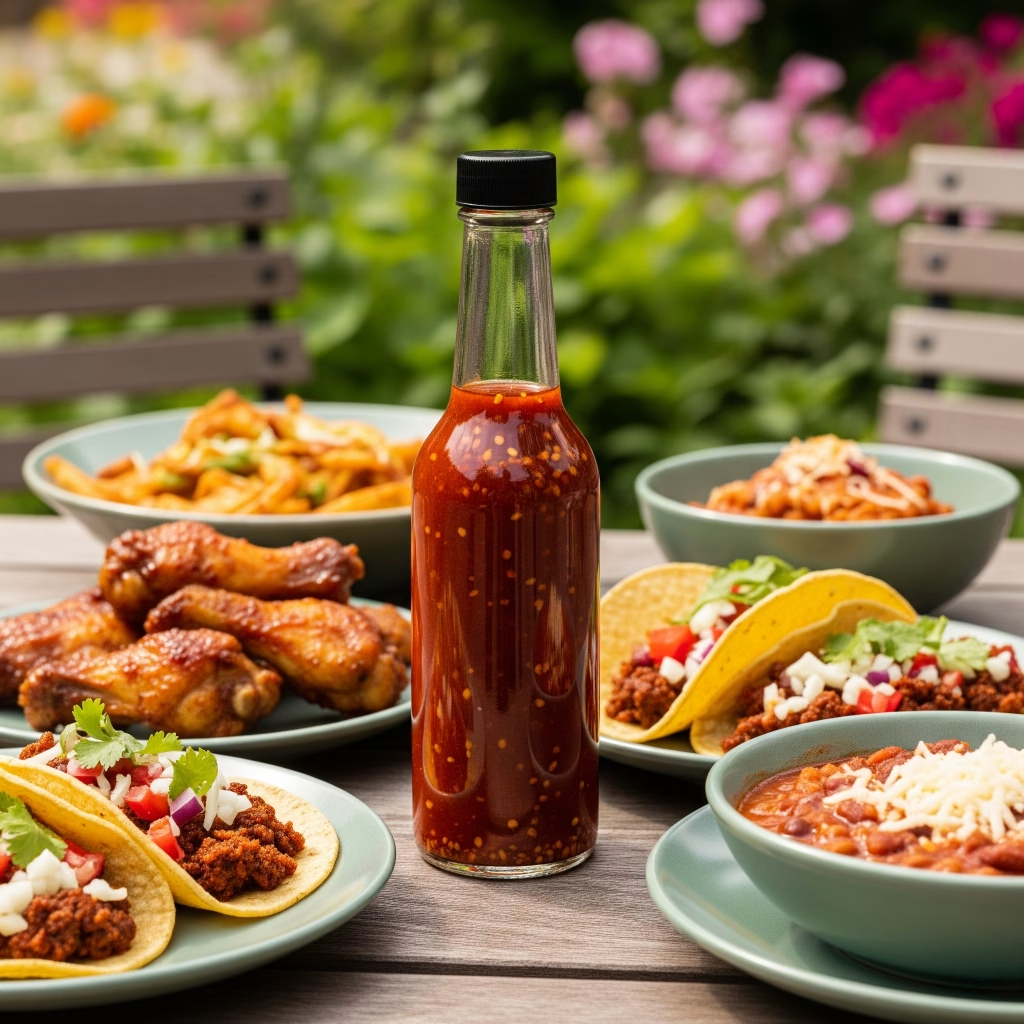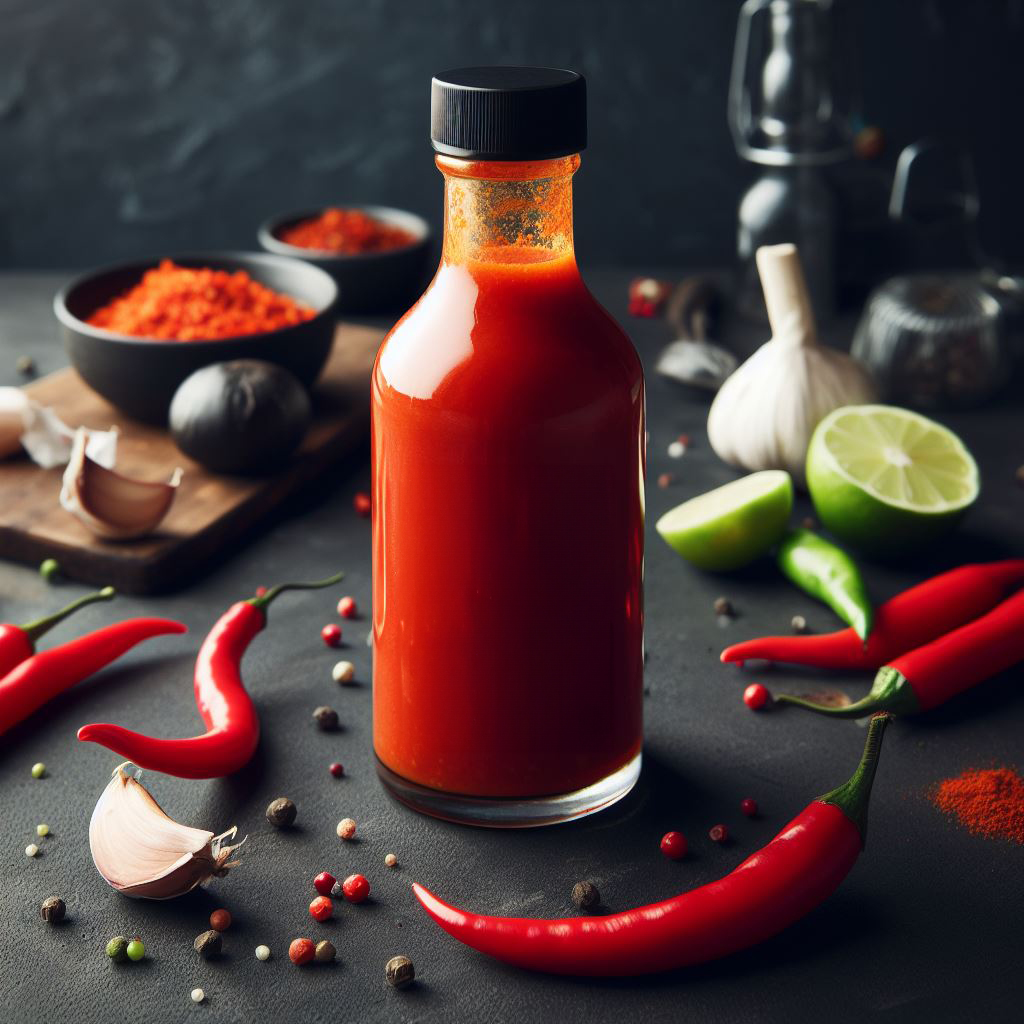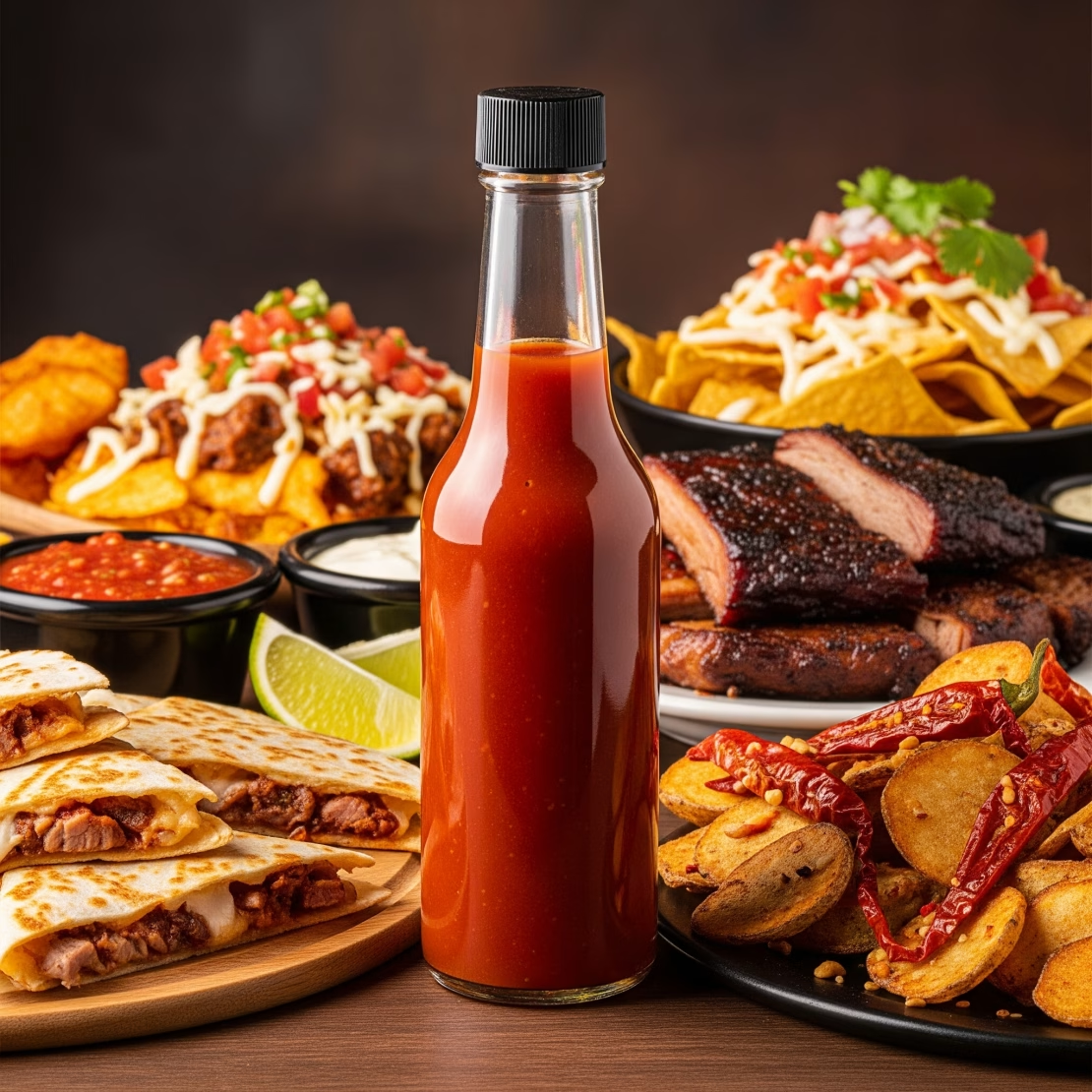Hot sauce is a condiment that has captured the hearts and taste buds of people around the world.
With its fiery kick and diverse flavors, hot sauce has become a staple in many cuisines, adding an extra dimension to dishes and enhancing the dining experience.
In this article, we’ll delve into the world of hot sauce, exploring its history, variations, health benefits, and much more. Making hot sauce at home can be a fun and rewarding process, allowing you to customize the flavor and heat level to your preferences.
Here’s a basic recipe to get you started. Feel free to adjust the ingredients and quantities to suit your taste.
Table of Contents
Ingredients
- 1 pound (about 450g) of hot peppers (such as jalapeños, serranos, habaneros, or a mix)
- 3 cloves of garlic, minced
- 1 medium-sized onion, chopped
- 1 cup (240ml) white vinegar
- 1 teaspoon salt (adjust to taste)
- 1 tablespoon olive oil
- Optional: additional seasonings like cumin, paprika, or sugar for flavor variation
Step By Step Instructions
- Prepare the Peppers:
- Wear gloves to protect your hands from the hot peppers.
- Remove the stems from the peppers and chop them roughly. Remove the seeds for a milder sauce, or leave them in for more heat.
- Sauté Aromatics:
- Heat the olive oil in a saucepan over medium heat.
- Add the chopped onions and minced garlic, sautéing until softened and fragrant.
- Cook the Peppers:
- Add the chopped peppers to the saucepan and cook for a few minutes, stirring occasionally.
- Simmer:
- Pour in the vinegar and add salt (and any optional seasonings).
- Bring the mixture to a boil, then reduce the heat to low and let it simmer for about 15-20 minutes. This helps meld the flavors.
- Blend:
- Allow the mixture to cool slightly before transferring it to a blender.
- Blend until smooth. Be cautious when blending hot mixtures—allow steam to escape and start at a low speed.
- Strain (Optional):
- If you prefer a smoother sauce, you can strain the mixture through a fine mesh sieve or cheesecloth to remove any solids.
- Adjust Seasonings:
- Taste the hot sauce and adjust the salt or add any additional seasonings to achieve the desired flavor.
- Bottle:
- Pour the hot sauce into clean, sterilized bottles or jars. Make sure they are completely cooled before sealing.
- Store:
- Store the hot sauce in the refrigerator. It should keep for several weeks to a few months, depending on the acidity and sugar content.
Remember, this is a basic recipe, and you can experiment with different types of peppers, additional spices, or sweeteners to create your signature hot sauce.
Adjust the quantities to suit your taste preferences and heat tolerance.

What is hot sauce?
Hot sauce is a spicy condiment typically made from chili peppers, vinegar, salt, and various spices. It comes in a wide range of heat levels, from mild to extreme, catering to different preferences and tolerance levels for spiciness.
Brief history of hot sauce
Hot sauce has a rich history that dates back centuries. It is believed to have originated in ancient civilizations such as the Aztecs and Mayans, who used chili peppers to add flavor and heat to their food. The popularity of hot sauce spread to other parts of the world through exploration and trade, leading to the development of diverse recipes and regional variations.
Types of Hot Sauce
Different variations based on ingredients
Hot sauce can be made using a variety of ingredients, including different types of chili peppers, fruits, vegetables, and herbs. Some popular variations include jalapeño hot sauce, habanero hot sauce, sriracha, and Tabasco sauce, each offering a unique flavor profile and level of spiciness.
Heat levels: mild, medium, hot, and extreme
Hot sauces are often categorized based on their heat levels, ranging from mild to extreme. Mild hot sauces are suitable for those who prefer a subtle kick, while hot and extreme varieties are reserved for the bravest of spice enthusiasts. The Scoville scale is commonly used to measure the heat level of hot sauces, with higher Scoville units indicating greater spiciness.
Health Benefits of Hot Sauce
Antioxidant properties
Chili peppers, the main ingredient in hot sauce, are rich in antioxidants such as vitamin C and capsaicin, which have been linked to various health benefits. Consuming hot sauce in moderation may help reduce inflammation, boost immunity, and protect against certain chronic diseases.
Metabolism boost
Capsaicin, the compound responsible for the spiciness of chili peppers, has been shown to increase metabolic rate and promote fat burning. Adding hot sauce to your meals may help enhance weight loss efforts and improve overall metabolism.
Pain relief
Believe it or not, hot sauce can act as a natural pain reliever due to its ability to trigger the release of endorphins, the body’s natural painkillers. Some people find relief from headaches, arthritis pain, and even muscle soreness by consuming spicy foods.

Tips for Using Hot Sauce
How to pair hot sauce with food
Hot sauce can be used to enhance a wide variety of dishes, from eggs and sandwiches to soups and stir-fries. Experiment with different flavor combinations to find the perfect match for your taste buds, whether it’s tangy buffalo wings or spicy tacos.
Cooking with hot sauce
Hot sauce isn’t just for drizzling over finished dishes; it can also be used as an ingredient in cooking to add depth and complexity to recipes. Try adding a dash of hot sauce to marinades, sauces, and dressings for an extra kick of flavor.
Dilution and moderation
If you find a hot sauce too spicy, don’t be afraid to dilute it with other ingredients such as citrus juice, honey, or yogurt. Start with small amounts and gradually increase the heat level as you become more accustomed to the spiciness. Remember to enjoy hot sauce in moderation to avoid overwhelming your taste buds.
Hot Sauce Around the World
Regional variations and specialties
Hot sauce is enjoyed in various forms around the world, with each region putting its own spin on the classic condiment. From Mexican salsa picante to Thai sriracha to Caribbean scotch bonnet sauce, there’s a hot sauce to suit every palate and culinary tradition.
Cultural significance of hot sauce
In many cultures, hot sauce is more than just a condiment; it’s a symbol of culinary identity and heritage. Hot sauce plays a central role in traditional dishes and celebrations, bringing people together over shared meals and shared experiences.
FAQs (Frequently Asked Questions)
- Is hot sauce bad for you? Hot sauce in moderation is generally safe for most people. However, excessive consumption can lead to digestive issues for some individuals.
- How long does hot sauce last? Properly stored, unopened hot sauce can last for several years. Once opened, it should be refrigerated and typically remains good for up to six months to a year.
- What should I do if my hot sauce is too hot? If you’ve accidentally added too much hot sauce to a dish, try balancing the heat with ingredients like dairy (such as yogurt or sour cream), citrus juice, or sugar.
- Can I make my own hot sauce? Absolutely! Making homemade hot sauce allows you to customize the flavor and heat level to your preference. There are countless recipes available online to suit every taste.
Hot sauce is more than just a condiment; it’s a versatile ingredient that can add excitement and flavor to any dish. With its rich history, diverse variations, and endless possibilities, hot sauce has earned its place as a beloved staple in kitchens around the world. So embrace the heat, experiment with different varieties, and spice up your life with hot sauce!


